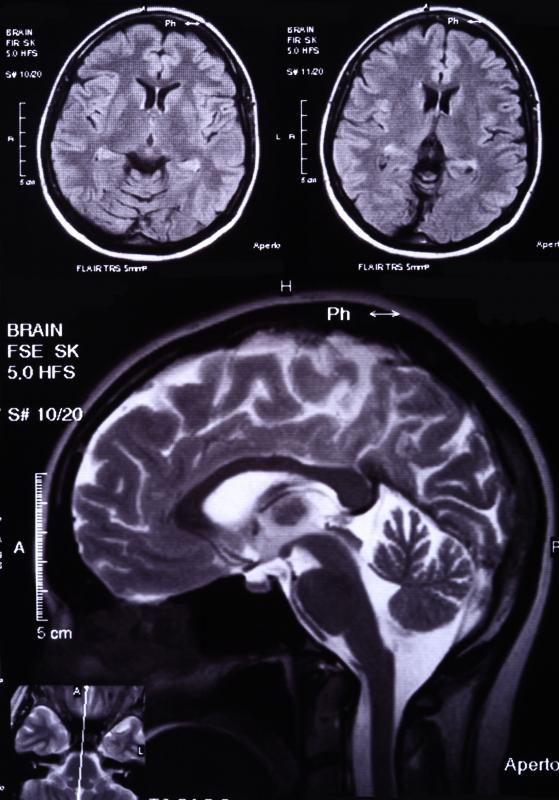At TheHealthBoard, we're committed to delivering accurate, trustworthy information. Our expert-authored content is rigorously fact-checked and sourced from credible authorities. Discover how we uphold the highest standards in providing you with reliable knowledge.
What Is Leukoaraiosis?
Leukoaraiosis is a condition where vascular density decreases. It is most commonly found in the deep tissue of the brain. The condition tends to develop in older patients. A person with leukoaraiosis is at a higher risk for cerebrovascular disorders and dementia.
While there are visible indicators of leukoaraiosis, they are not necessarily present in patients with the disease. The condition is typically detected via computer tomography (CT) or by magnetic resonance imaging (MRI). If they do present themselves, common signs of the condition include motor dysfunction in various parts of the body, an uneven gait, and cognitive impairment.
Leukoaraiosis spreads primarily in the white matter of the brain. This area is made up of myelinated axons which are elements of the nervous system. White matter is the material through which nerve connections travel.

Some of the most common causes of leukoaraiosis include diabetes, heart disease, and hypertension. People who smoke are at a higher risk of getting the disease as well. These things lead to the disease by causing damage to the vessels in the subcortical white matter of the brain. The damage is typically the result of consistent strain on the area over an extended period.

Many doctors will suggest lifestyle changes to those with leukoaraiosis in order to prevent the development of other diseases connected to the condition. This includes a higher risk of heart attack and stroke. Cessation of smoking is one of the most effective ways of combating the condition. A doctor may also suggest diet changes, exercise, and taking regular doses of aspirin.

There are several other tests that a doctor may recommend to a patient with leukoaraiosis. Some are meant to track the progression of the disease while others are used to determine if the condition has led to other problems such as blocked blood vessels in the area. A doctor will typically regularly check the cholesterol levels and blood pressure of a patient with this condition. Other tests may include a carotid ultrasound, stress tests, transcranial doppler studies, or an electrocardiography (EKG).

Binswanger's disease is one of the most common conditions caused by leukoaraiosis. It is a type of small vessel vascular dementia. The condition often appears after a stroke and is typically characterized by mental deterioration. It is named after Otto Binswanger, who was the first to describe the condition in 1894. His discovery was that atrophy of white matter in the brain causes dementia.
AS FEATURED ON:
AS FEATURED ON:

















Discussion Comments
@fBoyle-- Treatment of leukoaraisosis involves treatment of risk factors. In your case it's just blood pressure. In others, it can also be diabetes, smoking, alcohol abuse, obesity and other chronic conditions.
Since you have leukoaraiosis, you are at risk of stroke and you need to take your precautions. If you need to make lifestyle changes such as a better diet, more exercise, etc., do it now.
@fBoyle-- My dad also has this, and like you he has not received any type of treatment for it. I don't think this condition is treatable anyway. My dad's doctor said that this is fairly normal in the elderly and that they haven't figured out what it means exactly. It is thought to be related to high blood pressure and dementia, but not enough is known about it.
I think keeping your blood pressure in check and getting regular check-ups for cognitive problems is the most that can be done about leukoaraiosis.
I was recently diagnosed with leukoaraiosis but my doctor doesn't seem worried at all and hasn't suggested any form of treatment. He just changed my medication to better control my blood pressure, that's it. Is this normal?
Does anyone else here have this condition?
Post your comments